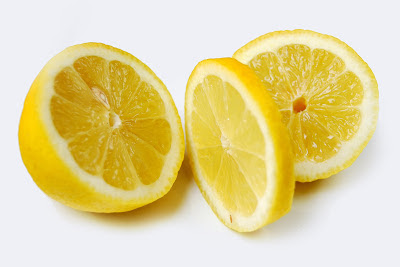Here is another valuable contribution from another guest blogger, Toni. She has lots of great ideas, tips and experience on how to sew on a budget. Enjoy!
Update: She now has her own blog, addressed sewjereli.blogspot.com, where she shares lots of great tips and tutorials. I love her blog and you will be missing out on heaps if you don't check it out for yourself!
***
Hi all, my name is Toni and I live in Western Sydney, as far west as you can
get before calling it the Blue Mountains. I started sewing over a year ago. I
borrowed my mum's Brother BM2600 and couldn't get enough. I sew for my two
little boys and some friends' children also :)
This post is all about your sewing budget. Personally, my budget for sewing is
pretty small. Sometimes I really want that beautiful new fabric, all those
patterns, a new fancy overlocker.. But I have to deal with the reality that it
isn't going to happen for me while my children are small. I love being a stay
at home mum and I'm not ready to give that up just yet. But that doesn't mean I
can't sew!
So here's how we finance my
favourite hobby.
I heard someone say once, they were "too poor to be
cheap". Huh? This was the first lesson I learnt while sewing.
I sewed up a beautiful Oliver + S Sketchbook shirt. I loved it. The pattern
cost me $22, so I went with a cheaper option $6pm fabric from a shop with no
content labels etc. I was trying to save money! I thought that if I just kept
using the same pattern I would save money on buying nice button up shirts for
the boys. But what happened? The fabric
pilled and went funny looking. Ruined! My sewjo also took a beating with that
one, and I haven't sewn the pattern again. So I am too poor to be cheap,
because I should have bought quality material, then my project would not have
become a waste of money.
Good quality material will wash and wear for years. So now I
endeavour to buy quality, when I can.
Each month spotlight has a $10 voucher in
thier Get Creative magazine and I use that to bring down the costs of my
purchases. I watch for sales on things I know I will use.
You can also save a lot with bulk orders at
the online store,
fabric.com, and that's where I will go when I can justify
spending >$100.
But... The absolute best way to find good quality material
at a bargain price, is to UPCYCLE!
Upcycling basically means that you take an old item of clothing,
cut it up and make it into something new.
 |
| Blank Tank from a thrifted 50c tee! |
Look in the local op
shops/thrift stores for good quality items, check the brand label and care
label for fabric content. You can find absolute bargains this way. For example, I purchased a 100% linen shirt in a size XL. That linen would have been costly
to buy new, but I got it for 50c! It became some run around shorts for my son.
Just think how much fabric is in a woman's maxi skirt? Or a large pair of men's
pants? More than enough for my two boys, and more than enough for most small
projects.
As you are cutting up your bargain, don't forget to pick out zippers! Save yourself
$2. Also, collect buttons! They can be an expensive part of a project. If you are
browsing a second hand store, and you see an item with fabulous buttons for a
couple of dollars, grab it! There is every chance that in Spotlight, similar buttons
would be more than $1 each.
Buy some older patterns for $1. With a bit of Google research you can modify
any pattern to make it look more modern.
Also, warn your family members not to donate clothing without letting you pick
through first! Try and adjust your eye to just see the fabric and not the shape or style, with a bit of creativity you can make something fabulous.
While you're in a thrifty mood, why not check your own
wardrobe for things you don't fit in anymore or you never wear, and turn them into
something your kids will love. Hmm and that handbag that's due to go in the
trash? Well pick out the magnetic clasps and zip before you throw it away. You
never know when you might need these things and I'm sure you could dream
something up as you are doing it.
I want to add that your sewing machine budget, is a whole different matter. It
is an investment. You want room to grow.
If you use good quality thread and regularly maintain your machine, it
is a tool that can last for a long time.
When I think about a sewing budget, I also think about how I sew the item. What
am I sewing to equal? Target? Myer? A boutique store?
Things such as fit, technique and seam finishes add value to
your product.
 |
| Clean slate shorts, upcycled from thrifted pants |
First of all, taking the
time to make design changes to make sure the pattern fits first. This
automatically puts you above Kmart/Target because their clothes are designed to
fit a wide range of bodies, not YOUR body or your child's body.
Then, what techniques do you employ? Do you try new things,
or avoid the zipper or buttonhole you have always dreaded in favour of something easier. Trust me the
time you take to perfect technique really adds value to what you are making.
What seam finishes do you use? Overlocking looks much more professional than
pinked seams. But a French Seam can look better than overlocking.
The reason I think about these things is because they cost nothing, they just
cost time. So, maybe you splurged a little and bought a fabric for more than say
$20 p/m. Are you going to sew roughly so that your garment looks unprofessional? Or take the time to do things right? If you do things right, then your garment
will save you money even though you did spend big on your fabric choice.
Example: Woman's Dress - Unlined
Material 3metres x $20 =
$60
Matching Thread
$4
Buttons /Zip
$5
Pattern
$10
Investment = approximately $80
You didn't test fit, so it looks a bit funny in areas, maybe you sewed the
zipper in a rush and it doesn't look quite right.
You can get a nice dress around the $60 - 80
mark at a big chain store, meaning you didn't save any money, really, you should
have just bought one.
Now imagine the dress you sewed fits like a glove, seam finishes look clean and
professional - that dress would cost $100 at the very least. So score, you
saved $20. :) (If not more!)
 |
| Sketchbook shirt |
Example:
I have sewed a few shirts for my sons. We attend regular Christian
meetings and they need a few more styles. If I want a nice one from a suit
shop, they start at minimum $40, which is too much for me. And to buy them
anywhere else they are not made to be worn tucked in or sometimes not made to
be worn with a tie. So if I get a pattern, lengthen and make fit adjustments,
omit any details such as pockets, to make it look like a proper men's shirt.
Then I am equalling the $40 shirt, therefore saving me money.
























